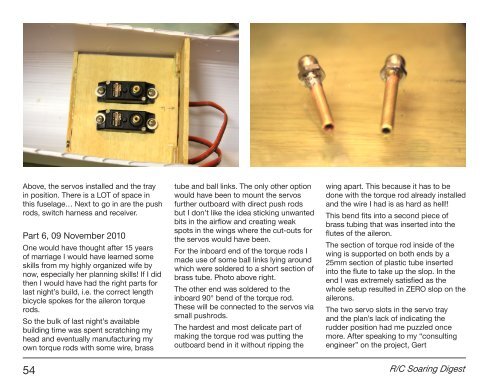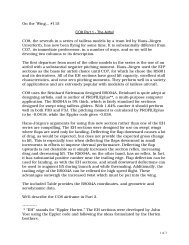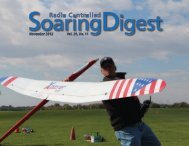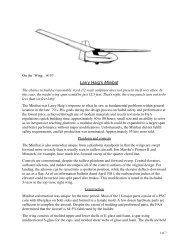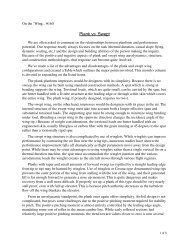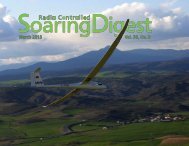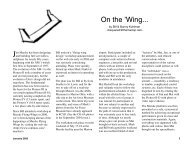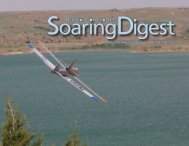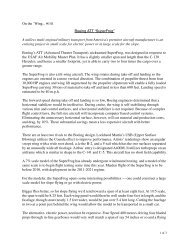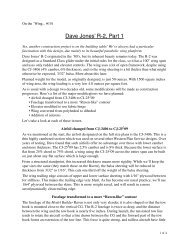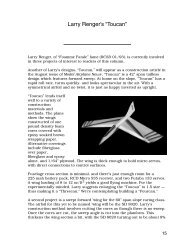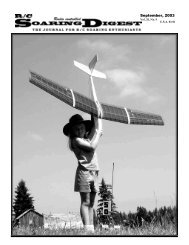Radi C ntr lled - Radio Controlled Soaring Digest
Radi C ntr lled - Radio Controlled Soaring Digest
Radi C ntr lled - Radio Controlled Soaring Digest
Create successful ePaper yourself
Turn your PDF publications into a flip-book with our unique Google optimized e-Paper software.
Above, the servos insta<strong>lled</strong> and the tray<br />
in position. There is a LOT of space in<br />
this fuselage… Next to go in are the push<br />
rods, switch harness and receiver.<br />
Part 6, 09 November 2010<br />
One would have thought after 15 years<br />
of marriage I would have learned some<br />
skills from my highly organized wife by<br />
now, especially her planning skills! If I did<br />
then I would have had the right parts for<br />
last night’s build, i.e. the correct length<br />
bicycle spokes for the aileron torque<br />
rods.<br />
So the bulk of last night’s available<br />
building time was spent scratching my<br />
head and eventually manufacturing my<br />
own torque rods with some wire, brass<br />
54<br />
tube and ball links. The only other option<br />
would have been to mount the servos<br />
further outboard with direct push rods<br />
but I don’t like the idea sticking unwanted<br />
bits in the airflow and creating weak<br />
spots in the wings where the cut-outs for<br />
the servos would have been.<br />
For the inboard end of the torque rods I<br />
made use of some ball links lying around<br />
which were soldered to a short section of<br />
brass tube. Photo above right.<br />
The other end was soldered to the<br />
inboard 90° bend of the torque rod.<br />
These will be connected to the servos via<br />
small pushrods.<br />
The hardest and most delicate part of<br />
making the torque rod was putting the<br />
outboard bend in it without ripping the<br />
wing apart. This because it has to be<br />
done with the torque rod already insta<strong>lled</strong><br />
and the wire I had is as hard as hell!!<br />
This bend fits into a second piece of<br />
brass tubing that was inserted into the<br />
flutes of the aileron.<br />
The section of torque rod inside of the<br />
wing is supported on both ends by a<br />
25mm section of plastic tube inserted<br />
into the flute to take up the slop. In the<br />
end I was extremely satisfied as the<br />
whole setup resulted in ZERO slop on the<br />
ailerons.<br />
The two servo slots in the servo tray<br />
and the plan’s lack of indicating the<br />
rudder position had me puzzled once<br />
more. After speaking to my “consulting<br />
engineer” on the project, Gert<br />
R/C <strong>Soaring</strong> <strong>Digest</strong>


